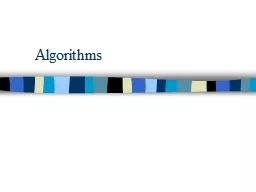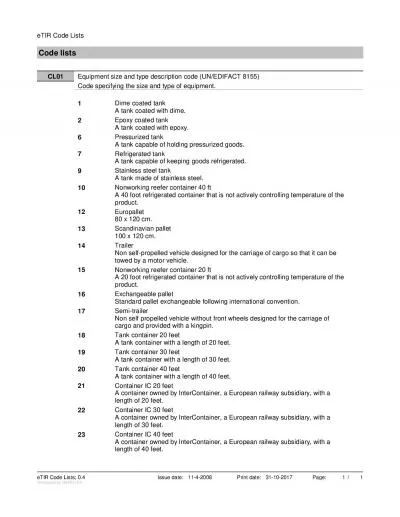PPT-Algorithms, Lists and
Author : stefany-barnette | Published Date : 2017-04-01
Pseudocode Dr Andrew Wallace PhD BEng hons EurIng andrewwallacecsumuse Overview Pseudocode Algorithm Lists Pseudocode Specification Top level design Detail level
Presentation Embed Code
Download Presentation
Download Presentation The PPT/PDF document "Algorithms, Lists and" is the property of its rightful owner. Permission is granted to download and print the materials on this website for personal, non-commercial use only, and to display it on your personal computer provided you do not modify the materials and that you retain all copyright notices contained in the materials. By downloading content from our website, you accept the terms of this agreement.
Algorithms, Lists and: Transcript
Download Rules Of Document
"Algorithms, Lists and"The content belongs to its owner. You may download and print it for personal use, without modification, and keep all copyright notices. By downloading, you agree to these terms.
Related Documents











![[READ]-Easy Learning Data Structures & Algorithms ES6+Javascript Classic data structures](https://thumbs.docslides.com/970589/read-easy-learning-data-structures-algorithms-es6-javascript-classic-data-structures-and-algorithms-in-es6-javascript-easy-learning-javascript-and-design-and-data-structures-and-algorithms-book-3.jpg)
![[READING BOOK]-Algorithms JavaScript Explains Algorithms with Beautiful Pictures Learn](https://thumbs.docslides.com/970728/reading-book-algorithms-javascript-explains-algorithms-with-beautiful-pictures-learn-it-easy-better-and-well-easy-learning-java-and-design-patterns-and-data-structures-and-algorithms-book-9.jpg)
![[FREE]-Algorithms JavaScript: Explains Algorithms with Beautiful Pictures Learn it Easy](https://thumbs.docslides.com/973922/free-algorithms-javascript-explains-algorithms-with-beautiful-pictures-learn-it-easy-better-and-well-easy-learning-java-and-design-patterns-and-data-structures-and-algorithms-book-9.jpg)
